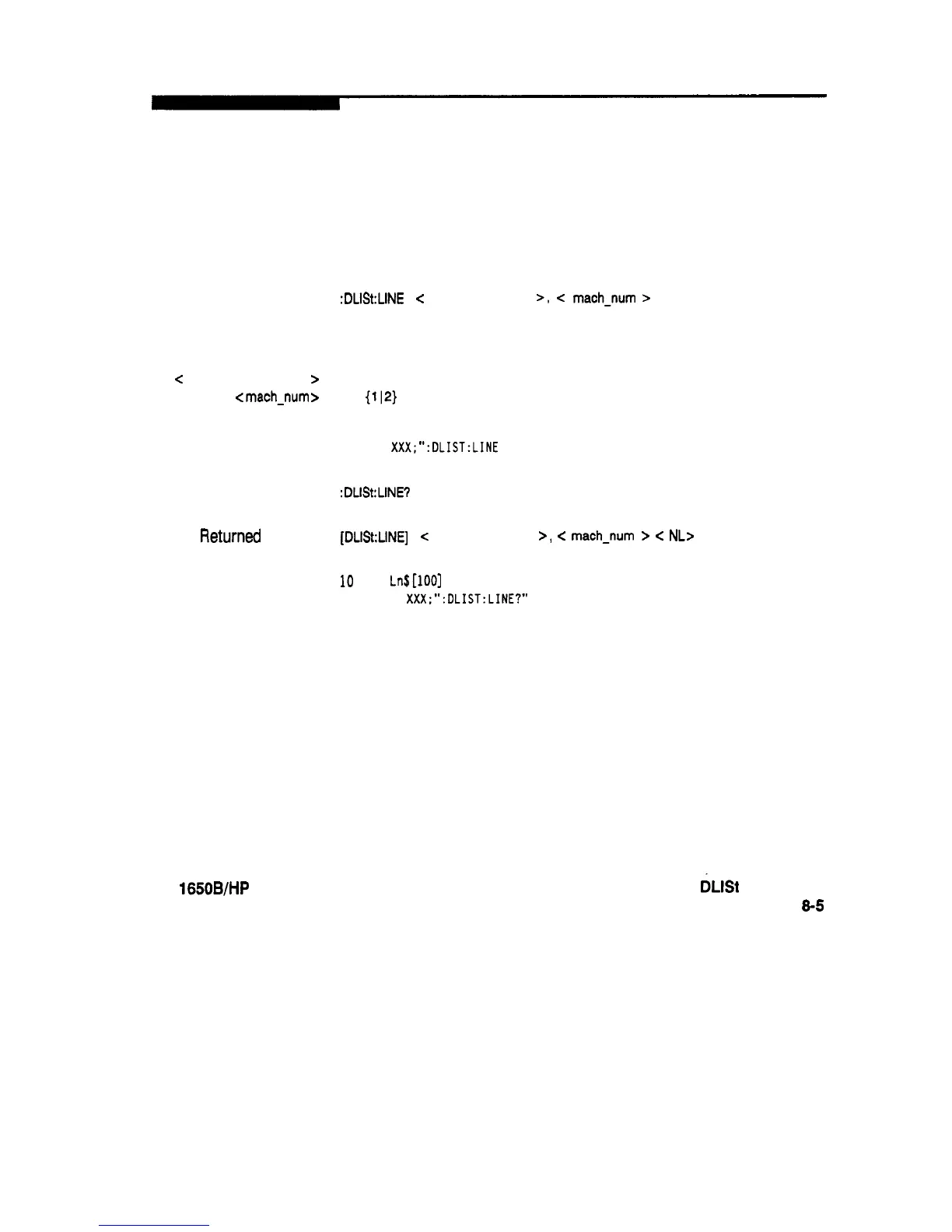LINE
LINE
command/query
The LINE command allows you to scroll the state analyzer listing
vertically. The command specifies the state line number relative to the
trigger that the specified analyzer will highlight at center screen.
The LINE query returns the line number for the state currently in the box
at center screen and the machine number to which it belongs.
Command Syntax:
:DLISt:LINE <
line-num-mid-screen
>,
e
math-num
>
where:
c
line-num-mid-screen
>
:: = integer from -1023 to + 1023
<
math-num
z
::=
(112)
Example:
OUTPUT
XXX;“:DLIST:LINE
511.1”
Query Syntax:
:DLISt:LINE?
RetUrnf3d
Format:
[DLISt:LINE]
<
line-num-mid-screen
>,
<
math-num
z=
c
NL>
Example:
10
DIM
Ln$[lOO]
20 OUTPUT
XXX;“:DLIST:LINE?”
30 ENTER XXX;Ln$
40 PRINT Ln$
50 END
HP 1650B/HP 16518
Programming Reference
DLlSt Subsystem
8-5
